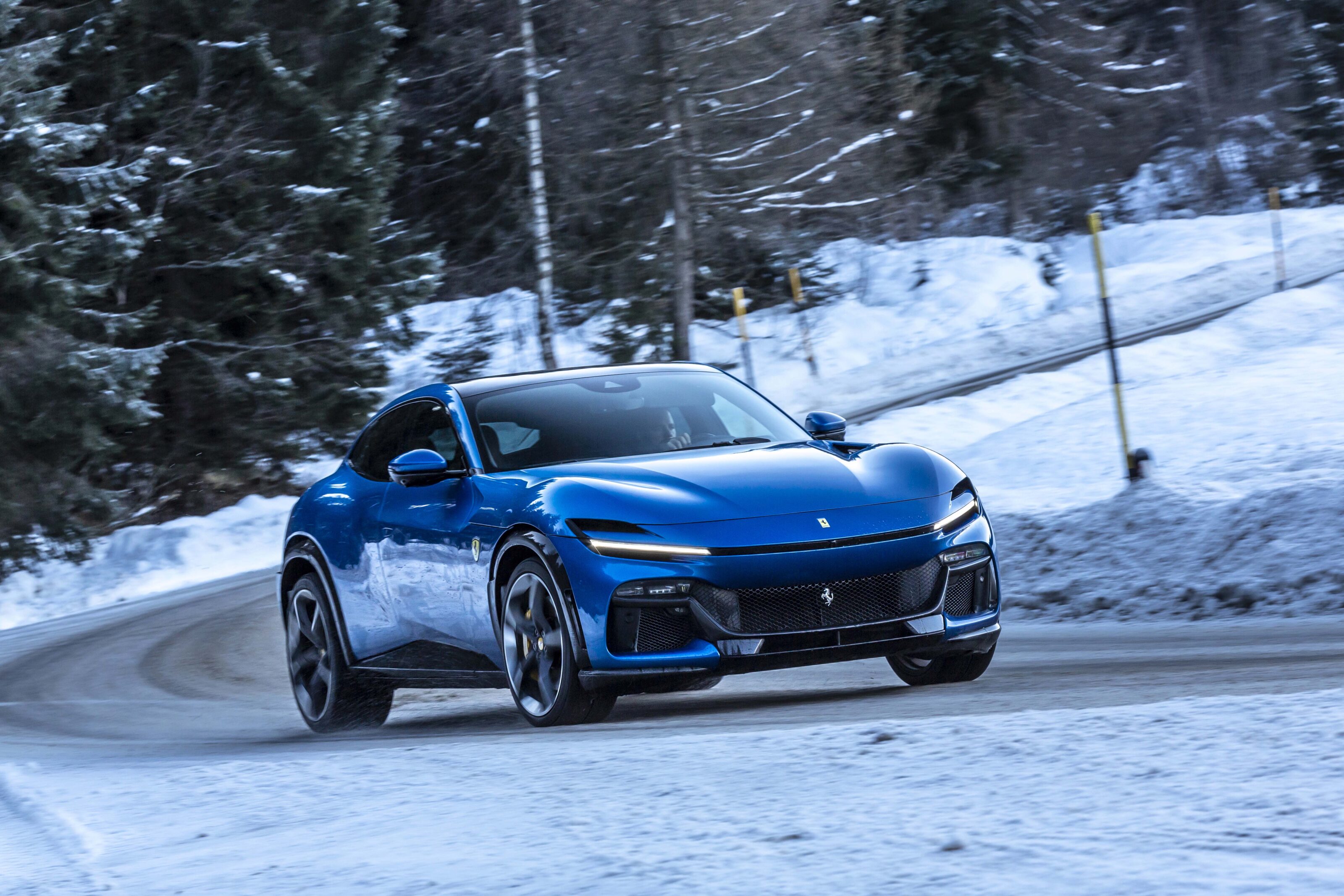Score breakdown
Things we like
- V12's elastic performance and ecstatic sound
- Handling and near-magical ride comfort
- Interior space and luxury
- Exterior design
- Brilliant Burmester audio system
Not so much
- The price, as usual
- Transmission could be smoother at low speeds
- Consumption and emissions both antisocially high
- Smartphone required for key functions like navigation
- Cable-only Apple CarPlay and Android Auto connectivity
- Fiddly swipe-and-tap menu controls on steering wheel
No Ferrari before it has ever had so many doors, so much ground clearance, so much luggage space, or such a good audio system as the Purosangue. But the question of whether these attributes somehow sully the status of the prancing horse badge it wears isn’t bothering me right now. Not at all…
The Purosangue’s pipes bark twice as it blips down two gears while I brake for the looming hairpin on a road fringed by remnants of recent snow and liberally dusted with grit.
Almost five metres long and a little more than two metres wide, the Purosangue casts a hefty shadow. Even so, it doesn’t take too much turning of the perfectly weighted steering to point its haughty nose at the apex.
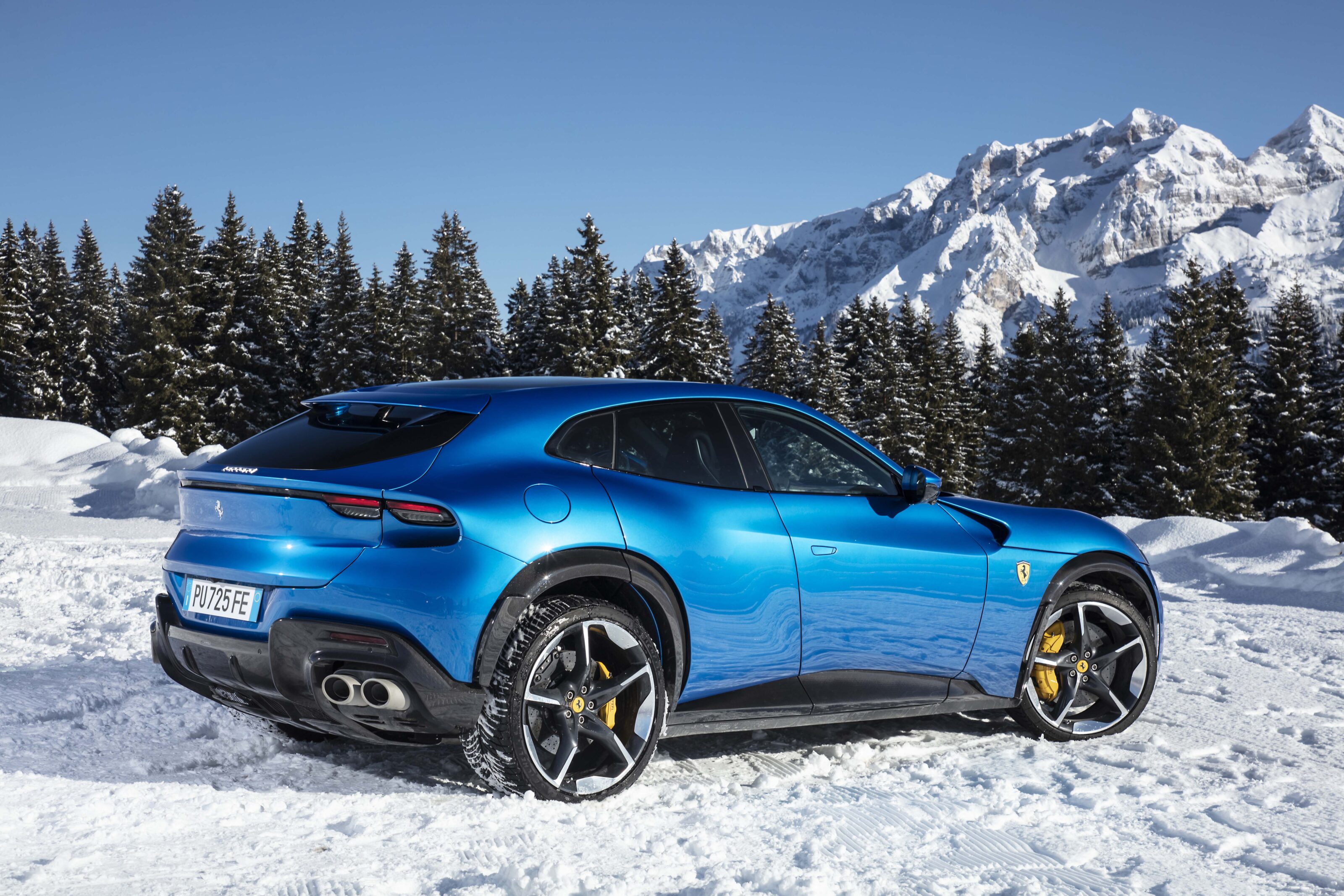
Winter tyres, like the massive Michelins the Purosangue is wearing, are never as grippy as summer rubber. The gritty surface of this road – snaking to the top of Monte Bondone, west of Trento in the Alpine north of Italy – is also, obviously, slippery. So driving out of the tight left-hander I’m prudent with pressure on the throttle pedal.
Not prudent enough, it turns out. Despite my caution, the Purosangue’s rear steps sideways. It’s not a total surprise, so I’m ready to dial in a delicate dab of opposite lock. But even as I do it, I sense the car’s chassis control electronics already reacting. Deftly and decisively. They’re subtle enough to make this minor moment quite graceful.
Accelerating uphill away from the hairpin the Purosangue’s V12 sings to somewhere in the middle of its very broad rev range before the double-clutch shifts up a gear. In Auto mode, the transmission seems clairvoyant, able to almost instantly sense every change in the driver’s mood.
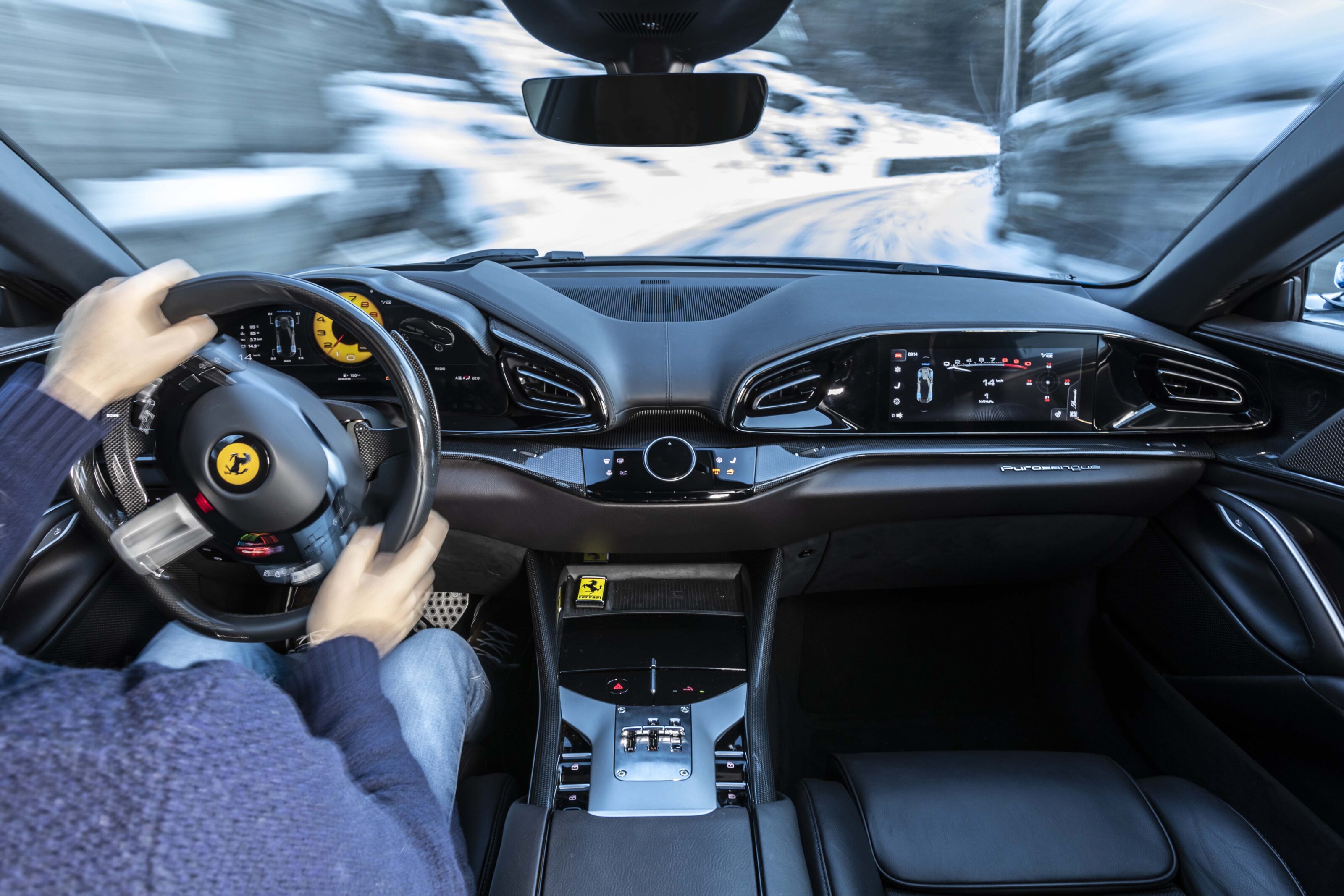
The Purosangue is equipped with the latest iteration of Ferrari’s Side Slip Control software. SSC 8.0 is brain-bendingly complicated, monitoring and controlling every component of the drivetrain, steering, braking and suspension systems.
But the complexity is not obvious or intrusive. What the driver feels is simply the Purosangue’s readiness to make its athletic ability easy to access. In this, it’s like every other Ferrari of recent years.
Unsurprisingly, the Purosangue’s software bundle builds on work done for earlier models. The ABS controller and steering grip-estimation system are based on tech introduced in the 296 GTB, the control logic for its all-wheel-drive system is based on that developed for the SF90 Stradale, while the origins of its excellent drivetrain control software date back much further in time.
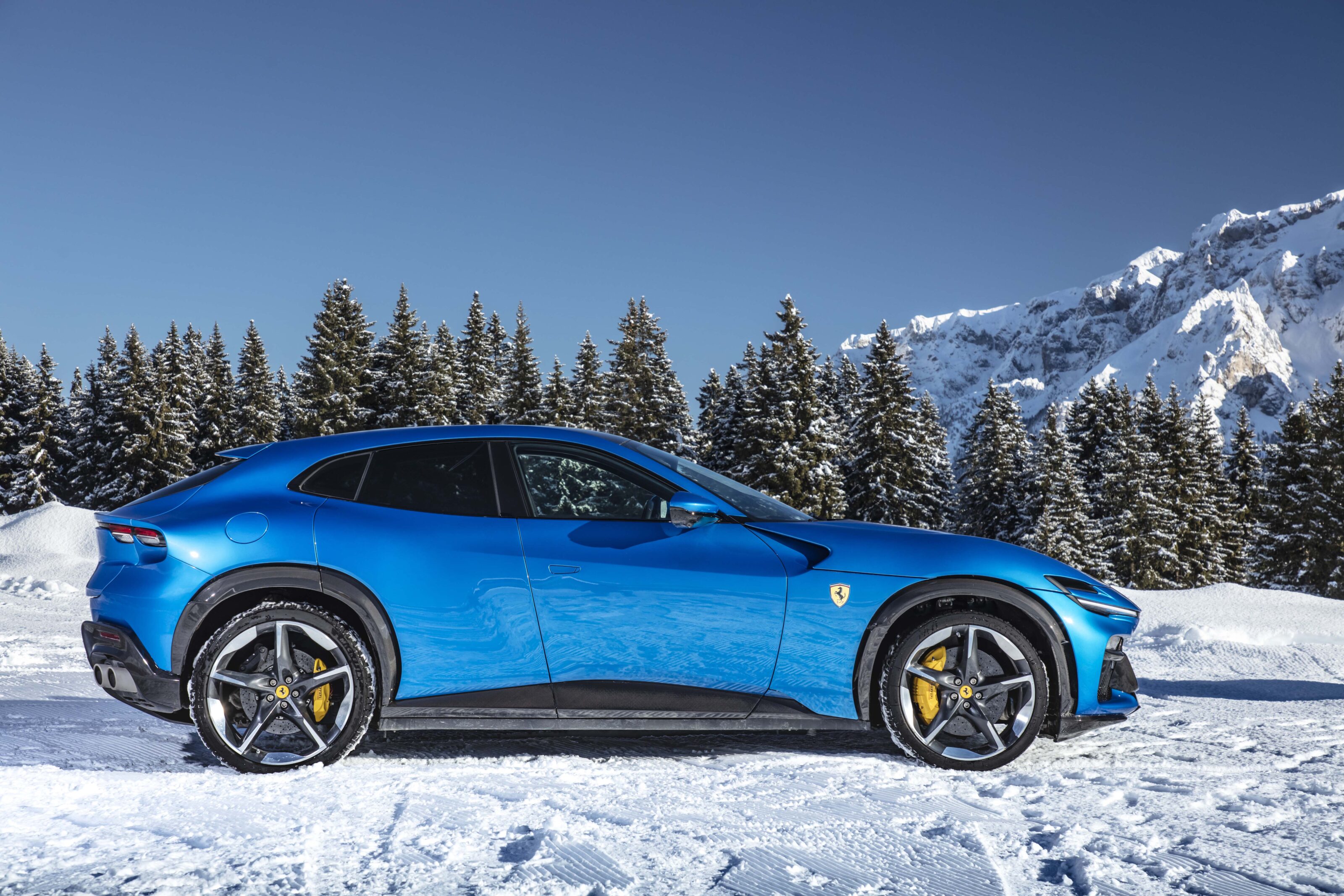
Some of the hardware, too, is familiar. The Purosangue’s eight-speed double-clutch is the same as that in the SF90 Stradale and 296 GTB. Its standard rear-wheel steering is from the 812 Competizione.
The dry-sumped 6.5-litre V12 is related to that in the 812 Competizione and uses basically the same cylinder heads. The Purosangue engine has different intake and exhaust systems, as well as cams profiled to deliver a broader spread of torque.
Although Ferrari says this was the aim, it cannot have escaped their notice that the Purosangue’s F140IA version of the V12 also produces power aplenty. And it happens that the engine’s 533kW is more than anything else that could be considered a rival.

Which gets us to the big question? Should the Purosangue be compared with things like the Aston Martin DBX, Bentley Bentayga, Lamborghini Urus, Rolls-Royce Cullinan and perhaps even top-end versions of the much less costly Porsche Cayenne, or not?
Ferrari says not, but you can make up your own mind. I know I have…
One thing that does set the Purosangue apart is Maranello’s solemn promise that it will never be allowed to account for more than 20 per cent of the brand’s annual production. So there’s no chance of it becoming Ferrari’s biggest earner and therefore the car that defines the brand, as is the case with some of the models mentioned earlier.
Further, it’s no great leap to view the Purosangue as a sensibly versatile replacement for the line of all-wheel drive, three-door models that began in 2011 with the FF and continued until 2020 with the GTC4 Lusso.
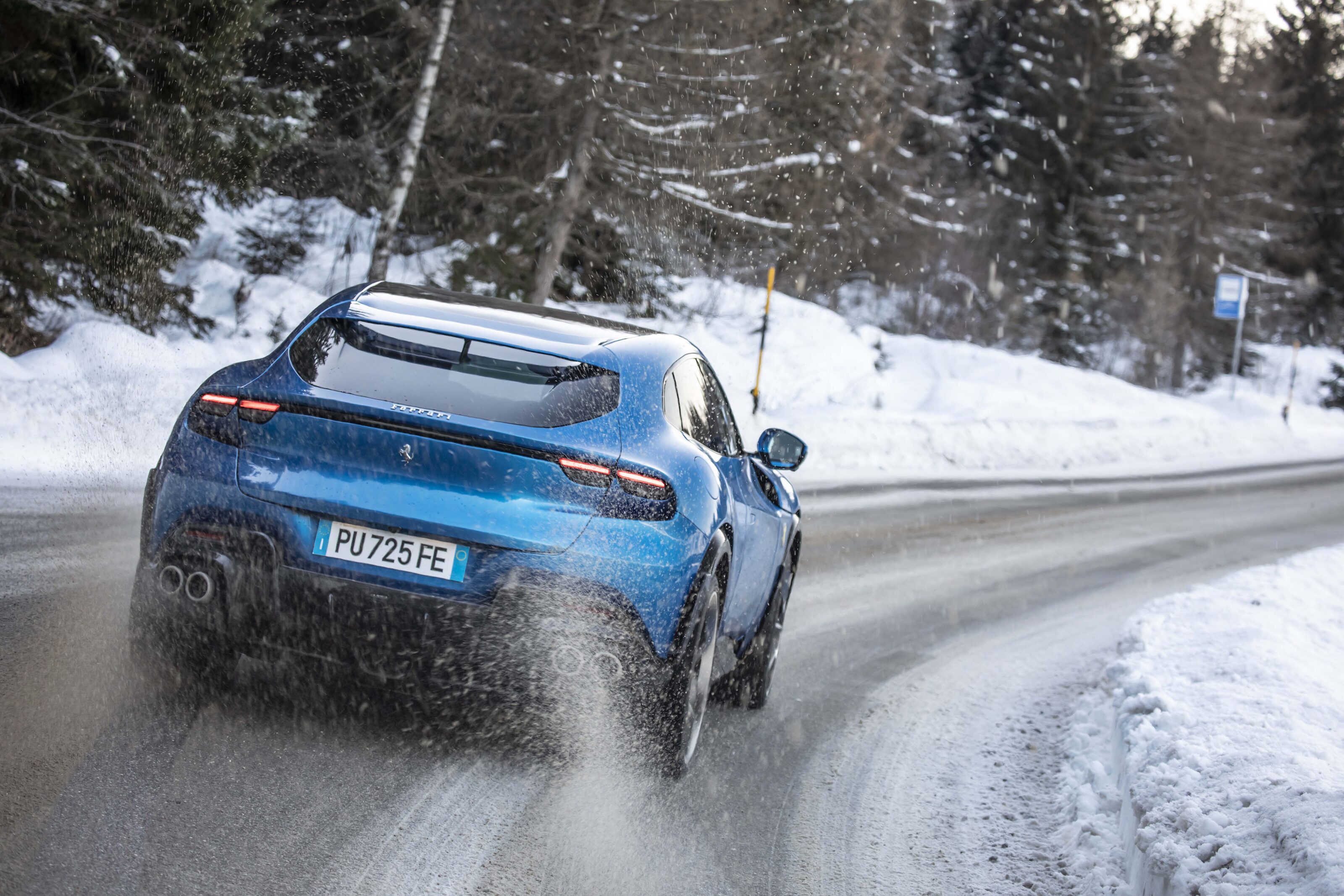
The Purosangue is also, arguably, in a higher class when it comes to looks. Ferrari Design Centre boss Flavio Manzoni and his team have created something that defies casual categorisation.
Curvily muscular, the overall shape is distinctive. Deceptive, too. The Purosangue’s massive wheels – 22-inch fronts and 23-inch rears – create an impression of compactness, at least from a distance.
The details are something of a visual feast, too. Among them are echoes of past Ferraris, such as the F12 Berlinetta-like aerobridges sculpted into the bonnet, and there are futuristic elements, like the patented floating wheel arches.
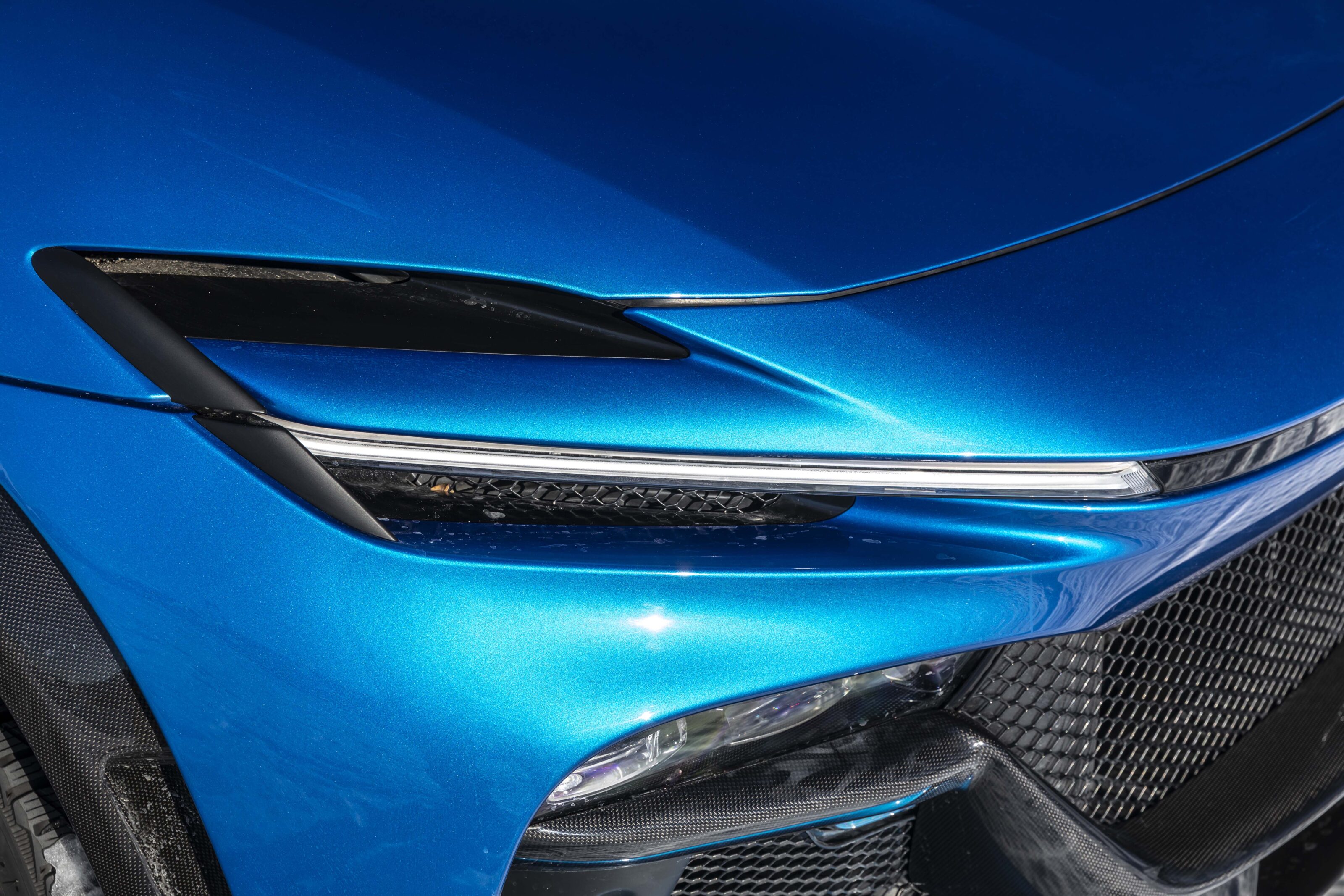
It isn’t immediately obvious how to open the Purosangue’s power-operated rear doors. They pivot on a massive rear-mounted single hinge. To see this you must first find the small tab projecting from the door’s skin adjacent to the B-pillar. It’s a switch; one tap cracks the door open, hold it for two seconds and the door glides open.
Ferrari designers admit their first thoughts for the Purosangue’s body didn’t include a B-pillar. The engineering department soon changed this, for several practical reasons. A pillarless design would have meant the leading edges of the rear doors would be overlapped by the trailing edges of the front doors, making it impossible to open them independently.
The rear door would also have to include a virtual B-pillar for crashworthiness, and it would have to latch securely into unacceptably bulky strong points in the body’s sills and header rails.

Finally, the Purosangue’s frameless side windows would also have been difficult to seal against rain and dust.
The car’s rear doors open very wide, easing access to its pair of rear seats. These are as firmly supportive as the front seats, and likewise feature electric fore-aft and backrest angle adjustment.
Aft of them is a 473-litre cargo compartment, the biggest ever in a Ferrari. When removed, its cover slots neatly into the floor. When the rear seats are power-folded flat, the Purosangue’s luggage capacity is massively increased. It’s truly hatchback versatile.
Those in the front seats are confronted by an expansive and immaculately crafted instrument panel. It’s unusual in not having a centre screen. Instead, there are individual screens for each of the occupants.
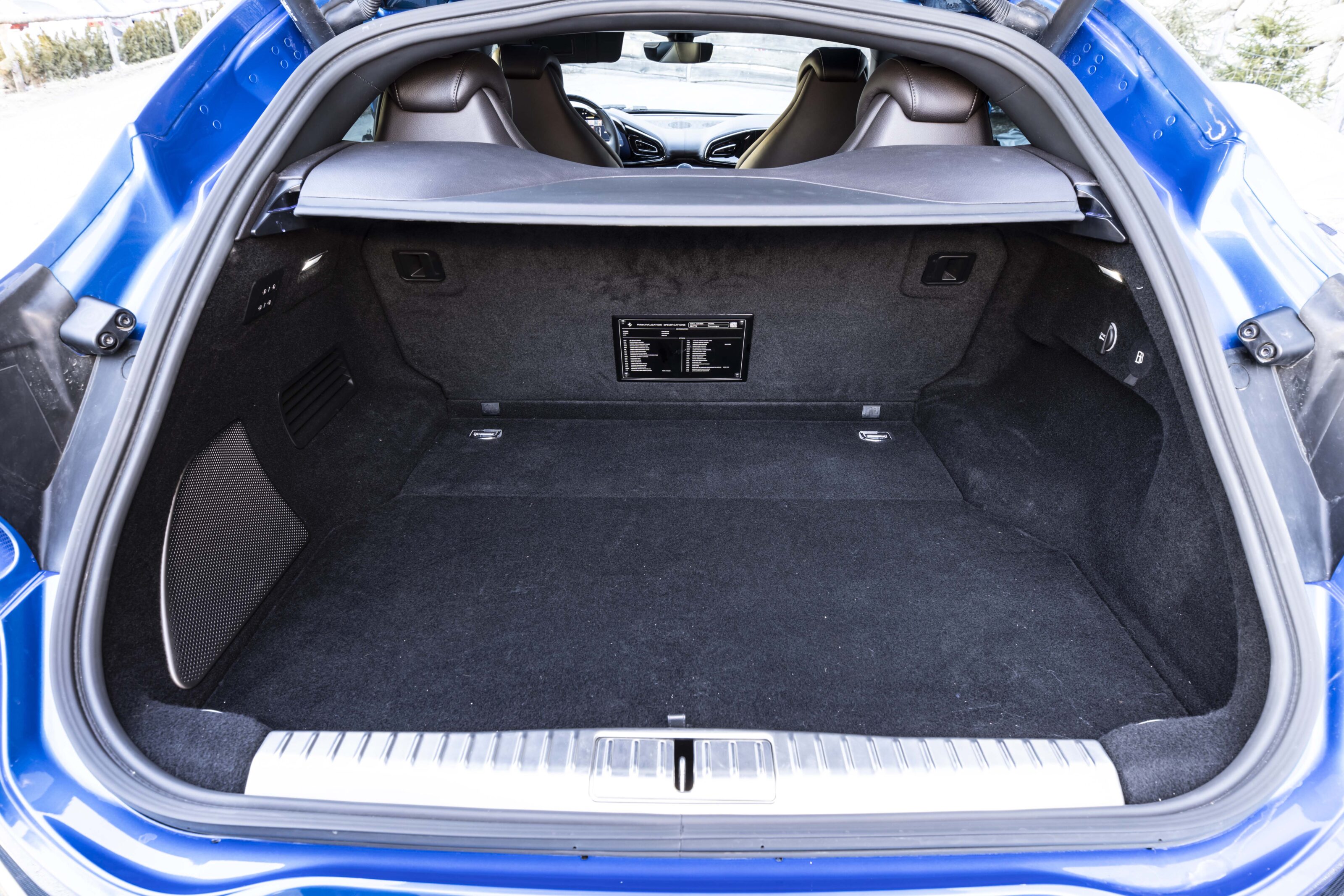
As well as the usual Ferrari gear selector, the centre tunnel has a combination dial and touchscreen to select ventilation and seat comfort options. There’s another in the rear.
While the seating position is higher than any other Ferrari, from behind the wheel the Purosangue doesn’t feel SUV tall. What makes the interior distinctive is that it’s more elegantly luxurious than anything ever produced by Maranello.
This impression of luxury isn’t diminished when driving. Cruising, the Purosangue is quieter and calmer than any other Ferrari. Noise and vibration levels are low. Even more striking is the suspension’s serene smoothness.
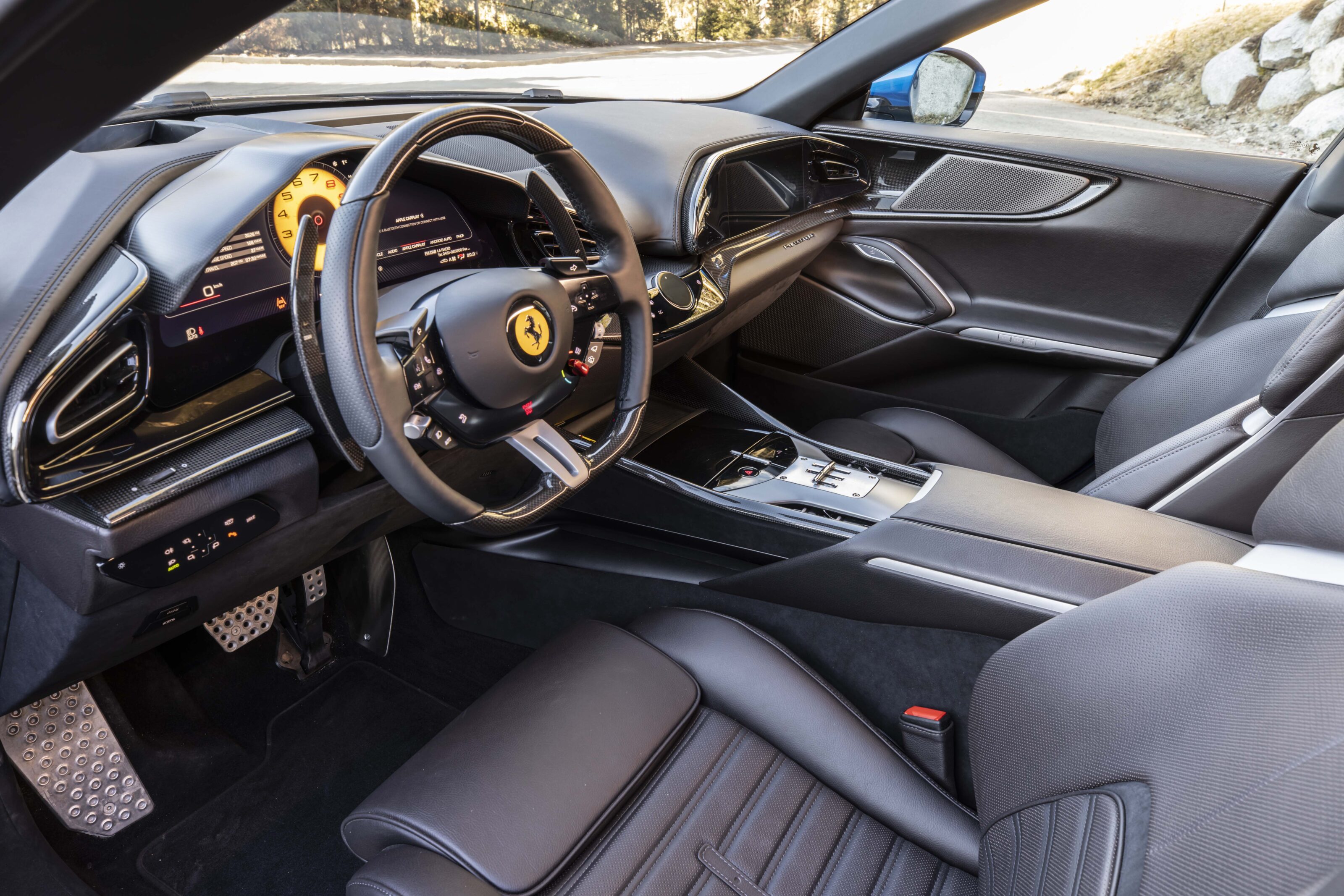
The Purosangue is the first car with innovative Canadian supplier Multimatic’s new True Active Spool Valve dampers. What sets them apart is their ability to create force, not simply absorb it. These dampers can push or pull. As well as making anti-roll bars redundant, they’re able to react almost instantly to bumps detected by their built-in accelerometers and position sensors. They’re speedy, precise… and tuneable.
A key component of the assembly is a compact and very responsive 48-volt three-phase electric motor, connected via gears and a spiral screw to the damper piston rod. This set-up enables the computer-controlled motor to extend or compress the damper, as ordered by quick-thinking software sucking data from accelerometers and position sensors on each corner of the Purosangue.
It’s intriguing tech, so during my day-long drive, I fiddled a lot with the Ferrari’s suspension options.

The Purosangue’s steering wheel has a five-position manettino. Twisting changes the drive mode, pressing it toggles through the damper settings. These are Medium and Soft in the Snow, Wet and Comfort modes, Hard, Medium and Soft in Sport and ESC off.
Earlier, a senior Ferrari chassis engineer told me that Multimatic’s TASV magic means damper settings don’t affect how much grip the Purosangue’s tyres can deliver. Sounds odd, but I don’t think he was fibbing…
Selecting Hard kills ride comfort, for no discernible handling benefit. Medium seems fine, at least on smooth surfaces. Soft, though, is the setting that works best most of the time. Ride comfort is outstanding, but pitch and roll are both beautifully controlled.
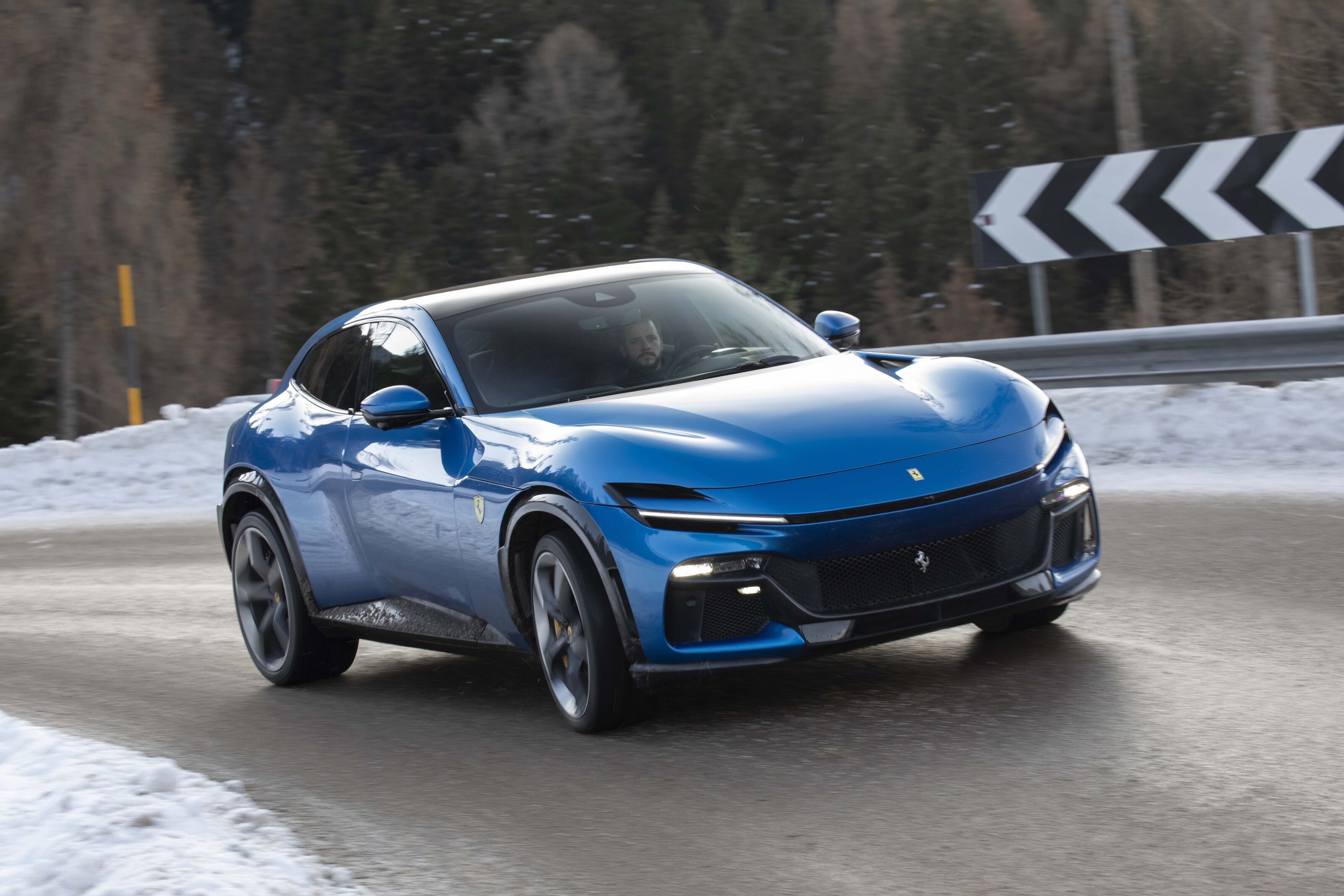
At the end of the drive, I can’t think of a single reason to not select Soft for every journey.
Or, for that matter, any reason why the Purosangue should not be considered worthy of the badge it wears.
It sounds like a Ferrari, accelerates like one, and handles like one too. It’s just that it brings more luxury, space, versatility, refinement and comfort to the masterful blend of desirability and sophistication routinely expected from Maranello these days. What’s not to like about that?
| 2023 Ferrari Purosangue specifications | |
|---|---|
| Engine | 6496cc V12 (65 degree), dohc, 48v |
| Max power | 533kW @ 7750rpm |
| Max torque | 716Nm @ 6250rpm |
| Transmission | 8-speed dual-clutch |
| Weight | 2033kg |
| 0-100km/h | 3.3sec (claimed) |
| Price | from $728,000 + on-road costs |
| On sale | Q4 2023 |
Score breakdown
Things we like
- V12's elastic performance and ecstatic sound
- Handling and near-magical ride comfort
- Interior space and luxury
- Exterior design
- Brilliant Burmester audio system
Not so much
- The price, as usual
- Transmission could be smoother at low speeds
- Consumption and emissions both antisocially high
- Smartphone required for key functions like navigation
- Cable-only Apple CarPlay and Android Auto connectivity
- Fiddly swipe-and-tap menu controls on steering wheel
We recommend
-
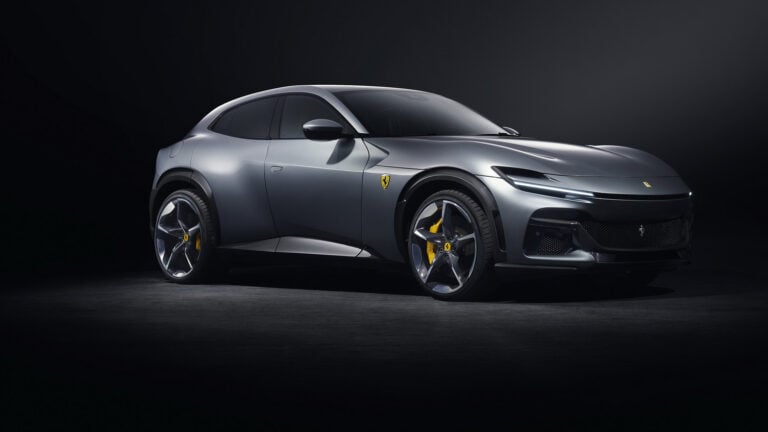 News
News2023 Ferrari Purosangue revealed, Australian launch confirmed
It's finally happened... Ferrari has officially added an SUV to its portfolio
-
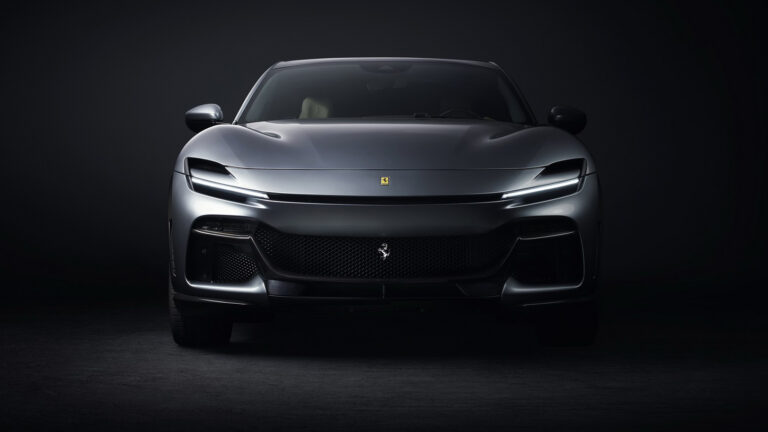 News
NewsVIDEO: 2023 Ferrari Purosangue walkaround review, sales paused on $728k SUV!
Despite being the first non-limited Ferrari to sell out before production kicks off, the brand says the Purosangue will only account for 20 per cent of sales
-
 News
NewsNew car calendar 2026: All the new cars coming to Australia next year
Here’s the WhichCar by Wheels guide to all the new cars that will launch in Australia in 2026. Check back in regularly for updates...


